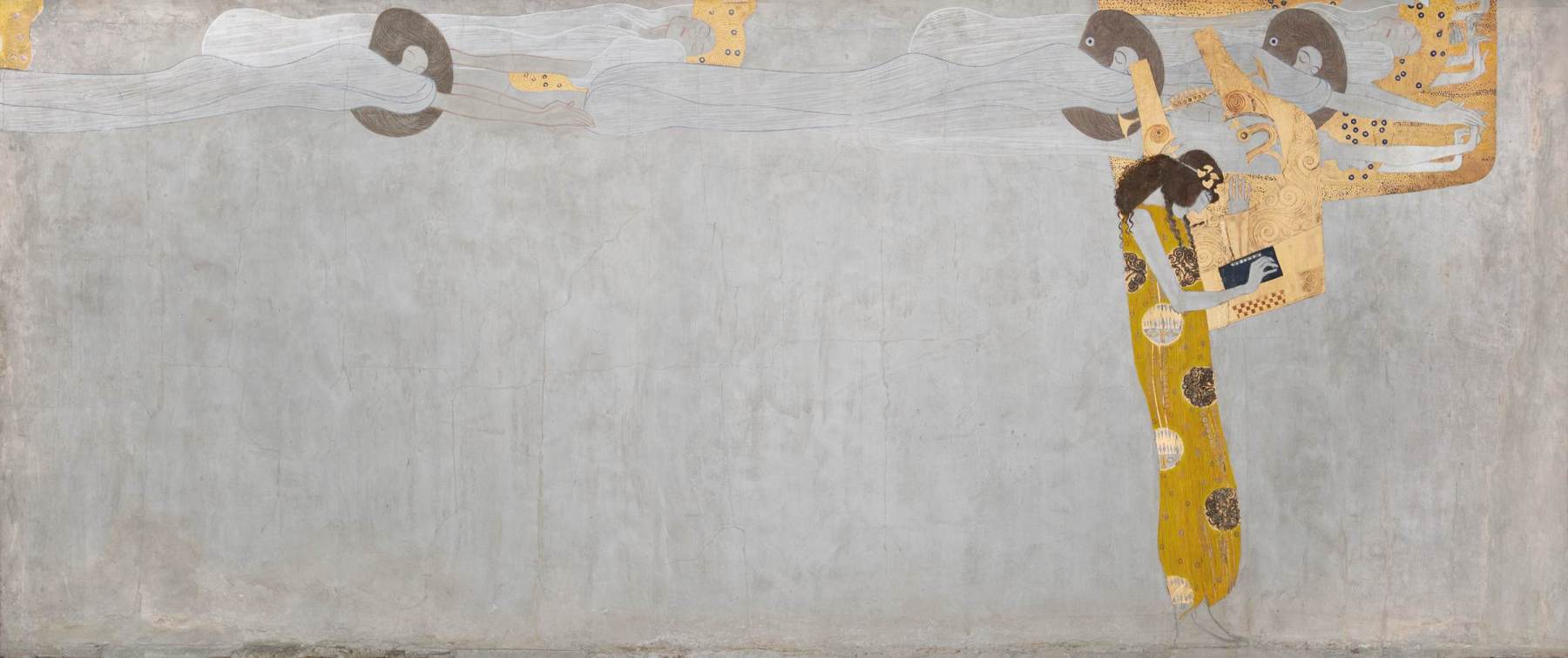Description
The painting Beethoven Frieze: right wall (part 1) by Gustav Klimt is an impressive work of art that stands out for its unique artistic style and intricate composition. With an original size of 215 x 516 cm, this painting is one of Klimt's largest and most elaborate works.
Klimt's artistic style is characterized by his use of decorative and ornamental patterns, and the Beethoven Frieze is no exception. The painting is full of intricate details and elaborate embellishments that draw the viewer in and make them feel as if they are immersed in a dream world.
The composition of the painting is equally impressive, with human figures and allegories intertwining and overlapping each other. The painting tells the story of man's struggle to achieve happiness and harmony in a world full of pain and suffering.
The use of color in the Beethoven Frieze is also notable. Klimt uses a rich and vibrant color palette that includes shades of gold, silver, and tan, as well as darker, earthier tones. These colors are used to create a sense of depth and texture in the painting, making it even more impressive.
The history of the Beethoven Frieze is also fascinating. It was created in 1902 as part of an exhibition in Vienna celebrating the centenary of the birth of Ludwig van Beethoven. The painting was designed as a sort of "frieze" or decorative band that encircled the exhibition hall, and was inspired by Beethoven's Ninth Symphony.
Despite its historical and artistic importance, the Beethoven Frieze is little known to many people. However, those who have the opportunity to see it in person are struck by its beauty and complexity, realizing that this masterpiece is truly one of the art world's hidden gems.

